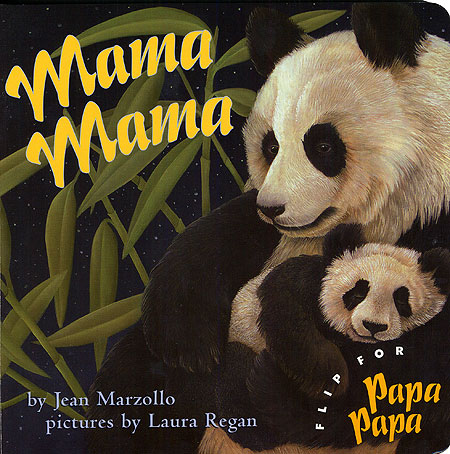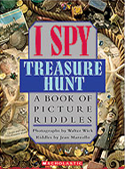I married a man who spoke Italian with his parents. Though I had taken two years of Italian in college, I couldn't understand a word they said. They spoke too fast for me. I couldn't hear where one word stopped and the next one started. So I ate tortellini and let the Italian float around me like music. Then, seven years later, I heard separate words and sentences. I perceived the patterns, and I could speak Italian.
Compared to babies, I was very, very slow. It usually takes them only one year of hearing and listening to the flow of language to start talking. Of course, some talk earlier and some talk later, but no baby takes seven years.
Babies and toddlers are superb language learners, but they don't learn to talk on their own. The ability to learn to speak a language may be a universal human trait, but the particular language one learns is cultural. It must be taught, and the most important teachers are the first ones: parents and caregivers. Of these, the best teach by conversing with babies so naturally and pleasantly that babies listen and with time learn to join in. They also read their babies books that feature rhythm, rhyme, and repetition. The text of such books highlights the pieces, parts, and patterns of our language.
Mama, Mama,
Nuzzle, hug,
I'm your little
Golden Cub.
Mama, Mama,
Soft as silk,
Give me warmth
And give me milk.

These verses, exerpted from my book Mama Mama (Harper Growing Tree, 1999), have a rhythmic, rhyming text that enables babies to hear words that sound alike, words that repeat, and sentences that start and stop. After they hear the poem enough, the babies anticipate the sounds and patterns of the poem and eventually repeat parts of it, especially the all important words "Mama, Mama."
The seven short verses of Mama Mama (two of which are quoted here) took me four years to write. I'm not complaining. I love this work. When I was little, I heard poetry recited by heart from my mother, father, grandmother, and aunts. The poems they had had to memorize when they were young stayed with them and amused them to their dying days. What treasures they enjoyed and passed on: golden rhymes, ruby rhythms, silver sounds. When I write today, I feel grateful to have luxuriated in this world as a child.
Compared to children of yesteryear, children of today are exposed less to rhythm and rhyme. While modern poetry can be delightful and profound, the very quality that makes it modern - namely, its loose, free form - renders its sound patterns less discernible to children. When I visit elementary schools, I often find that children, who, despite loving the poetry of Shel Silverstein and Jack Prelutsky, do not know how to analyze and write verse.
In her very helpful book for teachers and poets, A Poetry Handbook (Harcourt Brace, 1994), poet Mary Oliver, winner of the Pulitzer Prize and the National Book Award, complains that her college students can write free-form "modern" poems but not poems with rhythm and rhyme. She thinks that her students were insufficiently exposed to Mother Goose and other rhyming poets in their childhood. "To be without a felt sensitivity to a poem as a structure of lines and rhythmic energy and repetitive sound," she warns, "is to be forever less equipped."
I agree. I think that teachers should make sure that poetry (of all kinds) is read aloud in class every day. Children have to hear it in order to feel it, and they need to feel it in order to write it. Listening to, memorizing, and writing verse help children process the language flow; it helps them develop an alertness to the beginning, middle, and end sounds of words, otherwise known as phonemic awareness (an awareness that is a prerequisite for reading). It helps them learn vocabulary, follow a pattern, and practice punctuation. All of these skills and more go into the writing process, but children don't seem to realize how hard they are working because writing verse is a little like playing a game. But in order to play the game, you need to know the rules.
When I visit schools as an author, I like to take the time to equip children with the rules for writing the structured verse of the I SPY books (Scholastic). Few children (and teachers) sense the structure on their own. In preparation for my visit, children often make beautiful I SPY posters at the bottom of which they write I SPY riddles with absolutely no rhythm and no rhyme. "No," I say gently, "that's not how it works. Listen."
I spy a fishhook, an old paperclip,
A goose, a crab, and a cloudy ship;
A fish, a nail, a pencil, an oar,
The face of a man, and an X on the door.
from I SPY Treasure Hunt (Scholastic 1999)

After I read an I SPY riddle aloud, I have learned not to say: "The pattern is dactylic tetrameter." The minute I say that, eyes glaze over. I also have learned that no one but me wants to scan verse by writing long lines and short lines on the blackboard. So I sing. I sing an I SPY riddle to an old song, "Sweet Betsy from Pike". Now eyes are wide open. I explain, "If you want to write an I SPY picture riddle, here's the rhythm rule. You must fit your words to this song."
Next, I tell them, "You also need to meet the rhyming rule: the first two lines rhyme, and then the next two lines rhyme in a different way." Rhyming is fun. As the Pulitzer prize winning poet Howard Nemerov said, "Rhyme is a marvelous thing....It makes you think of things you would not be forced to think of - wouldn't have had a chance to think of - otherwise."
Children and teachers are often surprised to find that I SPY picture riddles are harder to create than they thought. Some children find it easier to write their riddles first, and then make their pictures. Some like to make their pictures first, but they usually need to change parts of their artwork to accommodate a favorite rhyme. Children may find it helpful to work with a partner, a small group, or the whole class. It depends on the age, abilities, and learning styles of the children. Whatever process is used, in the end, successful I Spy pictures and riddles complement each other.
How to Read Verse Aloud: No Singsong!
The word "singsong" goes back to the seventeenth century, at which time it meant "ballad" or "a piece of verse set to music." Today the term "singsong" is used in a negative way to describe monotonous rhyme and rhythm. I warn children, "If you write a lovely, lively I SPY riddle but read it aloud in a singsong way, you'll kill it. Poems with rhythm and rhyme, when read aloud, should not match the beat of a tick-tock, tick-tock metronome. Say your rhythmic, rhyming lines in a natural, speaking voice. Your audience will be glad you did."
Jean Marzollo is author of the best-selling I Spy books and many other picture books for children, as well as books for parents and teachers. For twenty years she was editor of Scholastic's Let's Find Out kindergarten magazine. In her recent years she has both written and illustrated her picture books.
Originally published by Lesley University in 2005. |

